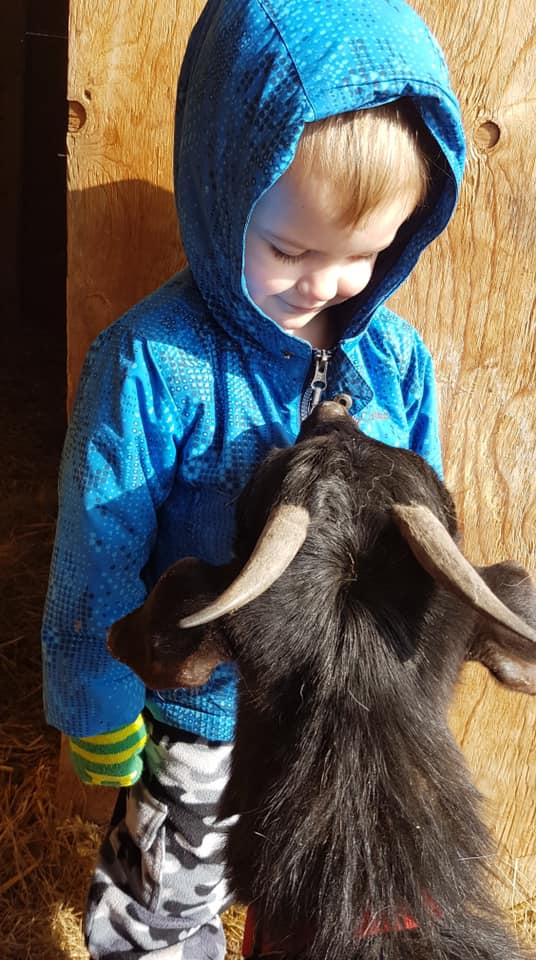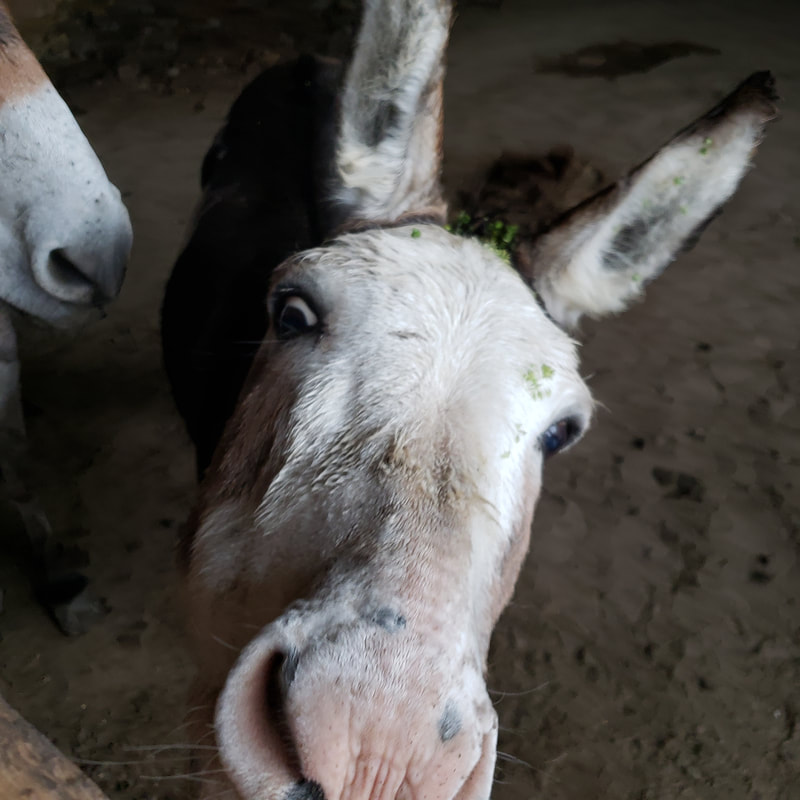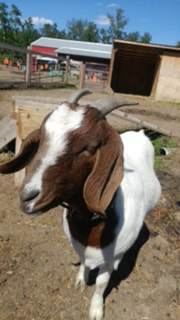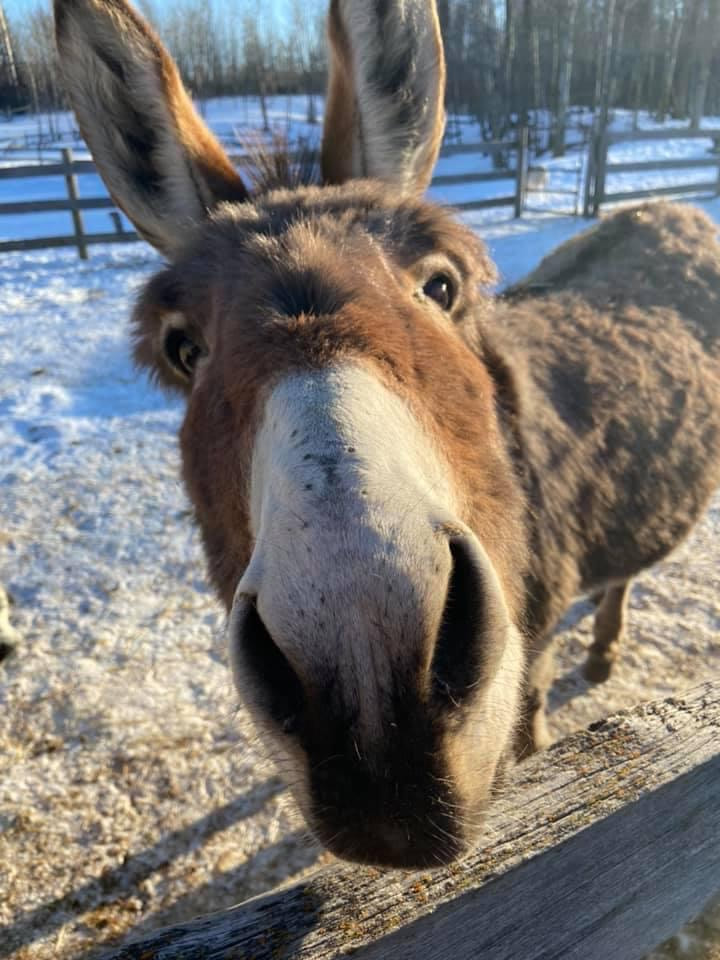 Dreamcatcher Nature Assisted Therapy is a psychology practice that integrates screened and certified animals into its profession of helping people. At Dreamcatcher, we conduct both animal assisted therapy (AAT) and equine facilitated counselling (EFC) and learning (EAL). Something happened in a session here and I used it as an example of transference / countertransference (t/c) in a team training. Then I thought: “I should write an article about this.” When I sat down to write the article, it occurred to me that it may not have been t/c that happened in the session. I had to stop and think about it. I wondered: “If it wasn’t c/t, was it projection?” As it is something that happens often in sessions and is one of the reasons we work with animals in practice, I think it is worth exploring. So here is what happened. We were asked to assist a young girl to develop her emotional awareness and to learn to communicate more effectively. Her parents requested that she go into our skill building program rather than be enrolled in our counselling program. The difference is that in skill building, we do not do counselling, we do not process traumatic events and we do not help people to recover from their losses or process their grief. In skill building, we help people learn to understand their feelings, to build awareness of the impact of their behavior on other people, to develop healthy and safe boundaries and overall, to learn about themselves while establishing functional patterns for navigating their social relationships. The girl was attending one of her first equine-assisted sessions with our skill building interventionist. They were working one-on-one and had included our horse Echo. When the girl, who we will call Annica, led Echo into the barn with her interventionist, who we will call Marla, Echo appeared to be quiet, calm, cooperative and willing to spend time with Annica and Marla. He stood solidly on four feet with his head down, eyes and ears relaxed and almost on the verge of what looked like a nap. Marla, standing on one side of Echo, handed a brush over to Annica who was on the other side of him. Annica began brushing the horse while Marla began to check in on how Annica’s week had been. Suddenly, Echo began to move his feet, his head went high and his eyes were wide. Marla knew Echo well and she quickly took control of the situation so that all three of them could remain safe. Annica had stopped brushing and was now standing up against the fence, her eyes large and brimming with tears. Marla checked in with herself: “What was that? Was there a noise? A movement? Is it me? Am I feeling uneasy or emotional?” Echo was a sensitive horse and sometimes he was very responsive to subtle changes in his environment, including shifts in emotion of the people around him. “Nope.” Marla thought: “It’s not me and I didn’t notice anything happening in here or outside that could have triggered Echo’s response.” She looked over at Annica, who was now squatted down against the fence, curling into what looked like a small human ball. She went to her and said: “Annica. Are you ok? Did something happen?” Annica then told Marla about a very bad thing that happened to her many years ago. Something that was going to require counselling and a transfer to the other program with a skilled therapist. So what happened with Echo? Why did he suddenly startle and become anxious? According to Annica, brushing Echo made her remember the very unsettling event she had survived and while she felt herself becoming ‘upset,’ Echo started to move. Is it possible that Echo was reacting to Annica’s feelings? Was he sensing her emotional distress? Or did he notice a shift in her posture? Did she change the way she was brushing him which made him uncomfortable? The answer is: “I don’t know” but I do know that something happened that he noticed and it is a great coincidence that it happened at the exact same time that Annica was becoming emotionally dysregulated. When this happens in EFC, it has been referred to by some authors as a form of biofeedback that is being provided to the client by the animal. What this means is that the animal displays concrete and visible behaviors in response to the client’s invisible emotions, or changes in their physiology, that they may or may not be aware of and that the interventionist is not aware of because the client does not show obvious changes in their state or disclose these feelings. Therapists and interventionists skilled in working with animals believe this happens often and claim that it is one of the most powerful aspects of including animals in the work of helping people. By definition, biofeedback is the technique of using visual or auditory feedback from electronic instruments to gain control over involuntary bodily functions such as blood flow, blood pressure, heart rate, skin temperature, muscle tension and brain activity. When biofeedback was first introduced, it was referred to as ‘a real-time physiological mirror’ (Sattar & Valdiya, 2017). So, in EFC, when people refer to the response of an animal to someone’s emotions or physiological shifts as “biofeedback,” they are referring to the animal as a biofeedback mechanism. When the animal displays a behavioral reaction, appears to escalate emotionally or becomes seemingly ‘unsettled,’ the interventionist checks in to this moment with herself to determine if she is feeling anything unsettling and discerns whether there is something in the environment that could have caused the ‘shift’ in the animal’s internal states. If neither of these are possible causes, she then checks in with the client to determine if the animal is possibly reacting to the client’s physiological state, hence acting as a biofeedback device. Is this what was happening with Echo and Annica? He detected a change in her emotional state and so he mirrored it back to her? According to Wikipedia, “mirroring is the subconscious replication of another person's nonverbal signals.” From neuroscientific research, we know that all humans and animals (including horses) have “mirror neurons” and in the human experience, these cause us to feel sad when we see someone cry, embarrassed for those who are humiliated and happy when others are smiling or laughing. This is referred to as Resonance (Sheade, 2016) and as Limbic Resonance by Lewis, et al, 2001 which refers to the emotional connection formed through relational experiences between beings. So, was Echo resonating with Annica’s physiology? Going back to my first thought, is this a form of transference / countertransference that was happening between Annica and Echo? And is this what happens when we experience countertransference in session? When we become agitated or emotionally dysregulated or behave or think differently in response to something our client is saying or doing, we have come to know this as “countertransference” in session but is it because our mirror neurons are firing and causing our reactions? Some of the writing I found claimed that horses have “millions” of mirror neurons, far more than humans, dogs or cats and that is why they are so adept at “reading our emotions” and responding to them. I couldn’t find the scientific evidence to support this, although it sounds cool. As horses are prey animals with almost 360-degree vision, they are acutely adept at reading changes in their environment and it could be that Echo was responding to Annica’s postural changes or breathing as she recalled her traumatic events. I think regardless of how he did it, it appeared that Echo picked up on Annica’s distress far before Marla did. As I come to the end of my pondering, I conclude that it, in fact, is countertransference as by definition, countertransference happens when the therapist has unusual feelings or behaviors in response to the client’s verbalizations or behaviors (Schwartz, 2019). In this case, Echo, the co-counsellor in the session, demonstrated his own behavioral reactions (possibly caused by his emotional dysregulation) that may have been in response to Annica’s non-verbal emotional dissonance, demonstrating a type of countertransference in the true fashion of a biofeedback mechanism and possibly through his mirror neurons! I look forward to your thoughts!
0 Comments
 What a great question! Thanks Sandy Sturdy for asking for this topic to be discussed here on our blog! I will start with the chickens: Our amazing and long-term administrative staff Jessica travelled to Ponoka, Alberta and then Okotoks approximately 4 years ago to purchase a bunch of extraordinary and really cool chickens! They included our chickens Michael Jackson/David Bowie, Clancy, Batman, Mushroom and a whole bunch more. One of them, a giant Cochin, we named Tanya and it turned out that she was a rooster! Lol, she was quickly renamed to T-Rex because he was as big as a dinosaur! (Not really but, you know ;)). Through the years, Jess, who is an extraordinarily knowledgeable person about chickens, has been arranging some cool breeding patterns and now all the rest of the chickens you meet at Dreamcatcher were hatched here and are the offspring of these beautiful exotic breeds. One chicken in particular, Bubs, was hatched by two moms. Unfortunately, they both wanted to sit on her to keep her warm and in the process, they injured her. Our volunteer coordinator, Emily, took her home and nursed her back to health for 3 months. Bubs is an amazing chicken who loves to snuggle humans and she is very much Emily's 'child.' Because of her early life injuries, she gets ill sometimes and when she is not feeling well, she goes home with Emily who makes her feel all better again. Our Rabbit: Bobbles We had two rabbits, Binky and Bobbles and they are named after my cousins in Newfoundland. Binky recently got sick and passed away. We are not sure what happened. Bobbles still lives in the chicken coop and in the summer, he has his own houses in the outdoor coops. Binky and Bobbles were given to us by my step-son and his wife, Alex and Alyssa Stepanov. They own the Pet Values in Spruce Grove and Stony Plain and donated these friendly bunnies to us! Moonshine: Mini Donkey Moonshine was made special for us! Cindy Gilette, who gave us our horse Rain and are (now deceased) llama Spitzy, made Moonshine for us! When she saw what Rain and Spitzy were doing for a living over here, she said: "I'm gonna make you a donkey!" And she did! She owns a farm in Tofield and at that time, bred mini donkeys. How cool is that? Ceilidh: Donkey Ceilidh (pronounced: Kaylee) was given to us by Sue McIntosh of the Healing Hooves program. I helped Sue with some children's groups/camps and fell in love with her donkeys. She loved them too but agreed to give them to me and so I brought Ceilidh and her sister Daisy home with me (her name was Maisey but i changed it). Daisy passed away last year but Ceilidh is going strong. Her name is Gaelic, as Sue is Scottish and I too, am from Scottish descent. In my culture in Cape Breton, a Ceilidh is a kitchen party. It's so cool that Moonshine and Ceilidh hang out on a regular basis as in my culture, that happens often back home! lol Rain: Horse As mentioned, Rain was given to us by Cindy Gilette. Cindy had rescued Rain from a breed farm where they likely would have taken Rain to the auction due to her ears being frostbitten. She was a yearling when Cindy rescued her and she came to live at Dreamcatcher shortly thereafter. Rain will be 19 this year. Echo: Horse Echo was given to us by our farrier, Derek Inverarity. His partner had been his groom at the racetrack when he was just 2 years old and when he injured his knee, they sold him to her for a dollar. She took him home but her horse was not nice to him and so he came to live here. Echo was 4 years old then...he will be 21 this year. Romeo: Horse Romeo was given to us by a lady who's daughter used to ride him / jump him. She outgrew horses and moved into cheerleading and so the lady wanted him to go to a good home and she chose us. Romeo was 9 when he came to us and he is now going on 11. Wanda: Goat Wanda came to live here because her brother Joey (now deceased) had been rescued here and he needed a goat friend so the farmer took Wanda from her twin sister and mother and gave her to us. She was only 3 months old. Wanda is now going on 4 years old. 1.5 years ago, a male goat named Jupiter was born here at Dreamcatcher and he gave Wanda her twin boys Sully and Oliver. They will be 2 years old this April. Luna: Goat Luna was given to us by a goat farmer and she was pregnant when she arrived. She had the baby Jupiter and as goats do, Jupiter gave Luna another baby named Orion. Orion will be 2 years old this year. Stardust: Goat Stardust was given to us by the same goat farmer as Luna and she was also pregnant when she arrived. She lost her fist baby but then Luna's Jupiter gave her another one, Nova. Nova will be 2 years old this year. Emma: Sheep Emma was given to us by a lady who was moving from her acreage and needed a home for Emma. Ellie: Sheep Ellie was given to us by our mechanic and fellow farmer, Sydney Gonzalez. None of us knew that Ellie was pregnant when she arrived but lo and behold, one day the staff sent a picture of a baby standing next to Ellie in the shelter. Although we thought the clever staff had photoshopped it, it turned out that Ellie had a baby overnight!! We properly named him Sydney after his sheep farming donor!!! Ninja: Cat Ninja was rescued by the Barrhead humane society as someone had dropped her off in Parkland County. The story goes that she was with 9 kittens when they found her and she was only 9 months old. At the same time, Dreamcatcher was asked to choose and prepare a cat for a treatment facility for children and youth and as we had a connection to the Barrhead society, we ended up with Ninja. The deal fell through and the facility no longer wanted the cat so Dreamcatcher became her forever home. Ninja is 3 years old this year. Shadow: Cat Shadow is exactly that and not seen by many as she is feral and lives under our office. She showed up here one day and then had 9ish kittens. We took them all to the humane society and they adopted most of them out but gave her back to us. She lives with us and elsewhere lately but can still be seen slinking around and sometimes will let people get close to her but not very often. Gravy: Mini Horse Gravy was living with some older people who had him for their grandchildren. When the grandchildren outgrew him, he went to live with a kind family who got him a wife named mashed potatoes. In the end, Gravy was alone at their farm and so they sold him to us so he could have a forever home with friends. Teddybear: Mini Horse Teddybear was living with a family nearby and he was often the pony party when the little kids he lived with had a birthday. Teddy did not like this anymore and would not let the children ride him so the family donated him to us and although we never let anyone ride him, he still seems quite uncertain of people. He has found his forever home though and helps many people who are also not sure of people. And that is the Dreamcatcher Therapy Animal crew! Hello and Happy Valentines Day! This is an extremely celebratory weekend for us all! We kicked it off With Chinese New Year, had a day of rest, are now celebrating Valentine's Day and tomorrow is Family Day. Yay! So much to celebrate and so much love!
So the question posed for the Blog was: "What is the process to be trained to work at Dreamcatcher?" And the answer is soooo exciting! First of all, after 17 years and 8 months, Dreamcatcher has evolved to be able to offer employment in a variety of ways to a variety of people. I will attempt to break it down by categorizing the positions we currently have and how we ensure people are adequately trained for the job. 1. Therapists - to work as a Dreamcatcher therapist, one must have a Master's degree in psychology, social work or counselling. Preference is given to those who are registered psychologists and training can be provided for those in other professions (i.e., social work) as they are required to follow the psychologists code of ethics. Social workers on the Clinical Registry are preferred. These therapists are skilled in working with complex cases and if not, they are trained to do so once they begin employment through consultation and supervision. They must have an affinity for animals and for being outdoors and if they are not already trained in animal assisted or equine facilitated therapy, they must undergo training (could be on the job) in these mediums. They are included in formal Dreamcatcher courses, workshop and internship trainings to learn about our animals, our process, the ethics of the mediums and much more. 2. Behavior Specialists or Interventionists - typically, these staff have an undergraduate degree in psychology, child and youth care, social work, rehabilitation practitioner, life coaching or something similar. They are skilled in behavior management and pre-trained to work with people who my have special needs and require skill building for functional living. The are adept at working with families and at providing strategies for assisting families and the individual to work effectively toward their goals. They must have an affinity for animals and for being outdoors and if they are not already trained in animal assisted or equine facilitated interventions (AAI's), they must undergo training (could be on the job) in these mediums. Formal training in working in AAI within their scope of practice is provided. 3. Animal Handlers - these helpers can come from a variety of backgrounds and assist in a variety of ways. For the most part, they are have an affinity for animals and the outdoors and work well in teams or groups. If they do not have experience with animals, they can begin becoming familiar with Dreamcatcher through volunteering, observing our work with animals and people, spending time with our animals and then undergoing formal training to handle our animals in sessions, groups, camps or special events. 4. Group, camp or special event staff - this can be a combination of therapists from different specialties (i.e., art, music, somatic, etc.), interventionists and animal handlers and the training they require is to be expert in their specialty first and foremost and then training at Dreamcatcher in animal handling and AAI's is provided to understand how to facilitate or assist within these contexts. There are many more positions at Dreamcatcher as we evolve, some of which include volunteer coordinator, marketer, editor, videographer, administrators, tourism staff, academy course developers and instructors, dog trainers, horsemanship experts, practicum students and much more! Thank you Ashely for your awesome question! I hope I answered it as I got way too excited and might have gone off track! I hope you have an awesome long weekend and I look forward to answering any other questions anyone has! Yay! I love Blobbing! 2/12/2021 0 Comments We Now Have a Blog!!!I am sooooo excited that we now have a Blog!!! I love to Blob, I mean Blog. My sister once called my facebook ramblings my "Blob" by accident....but was it an accident??? Hahahaha
Well, I can't wait to start this process and it has been years in the making. We shall see how this process goes! I welcome comments, suggestions for content, ideas, interests and questions. Let's get started! |
AuthorWrite something about yourself. No need to be fancy, just an overview. Archives
July 2021
Categories |
Location |
|





 RSS Feed
RSS Feed








